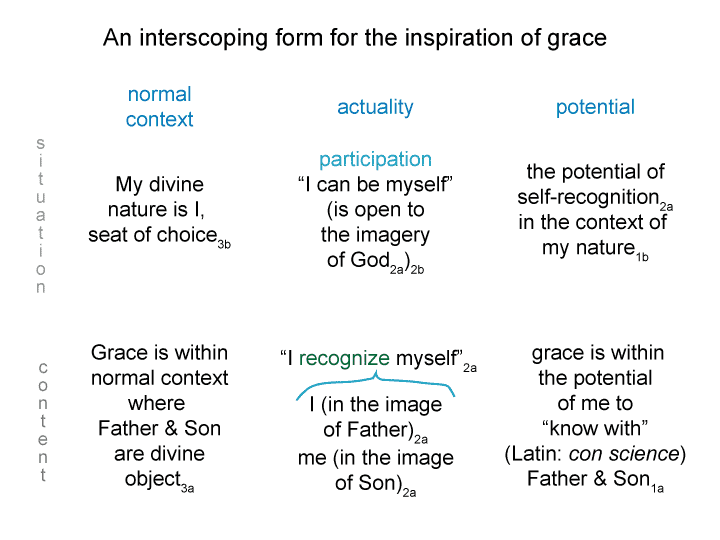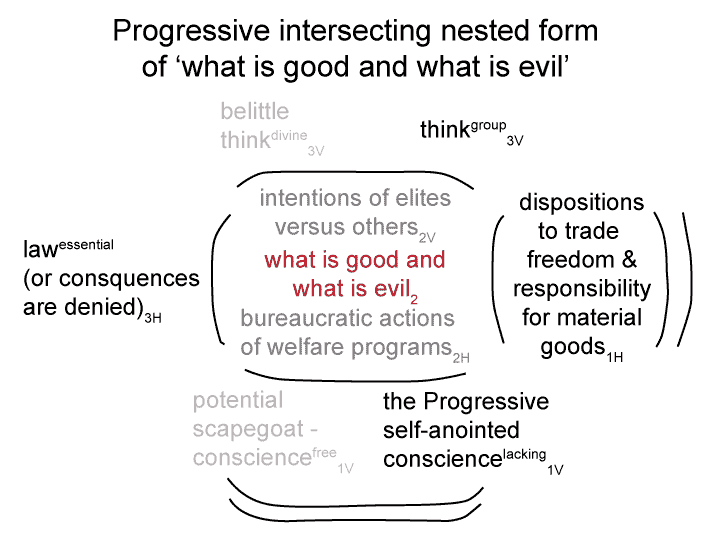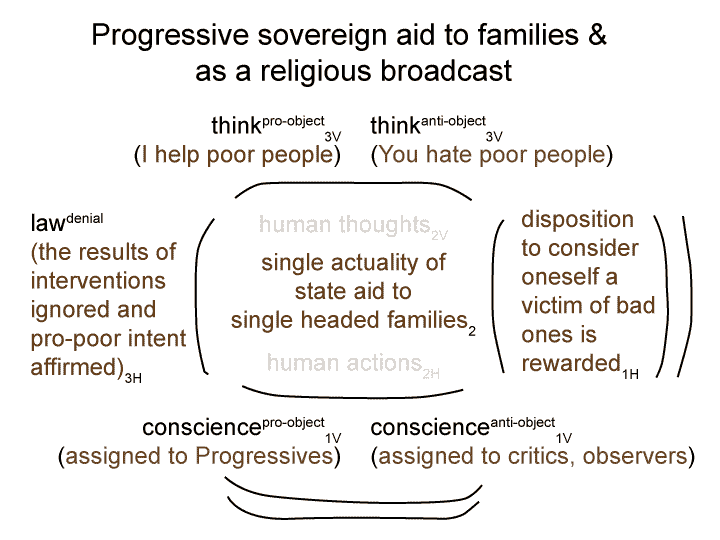Category Archives: Defining Religion
Man and Sin by Piet Schoonenberg (1964) 2.2 CZ
[Yet second model reflects the third. This model suggests that the person cannot truly recognize “himself” except as an image of God. The Holy Spirit mediates this recognition.
Through the normal context of the Holy Spirit, I can recognize myself.
If the person does not recognize “himself” in this fashion, which is the fashion that we evolved to see ourselves, then another self-recognition occurs:
I recognize myself according to the designs of a normal context that is finite, that is, an idol.
I idolize the design through which ‘I recognize myself’.
This model offers a postmodern scholastic avenue for appreciating Schoonenberg’s text.]
Man and Sin by Piet Schoonenberg (1964) 2.2 CX
[Models? Let me look at models again.
Model three is of the One Triune God.
God includes all three categories of existence: thirdness, secondness, and firstness.
In my version of the model, God Recognizes Himself.
‘God is One’ is the Possibility of Recognition. The realm of possibility is monadic. There is only one.
Actuality is dyadic. God is Father and Son. God is the One Who Recognizes and the One Who Is Recognized. Both belong in the realm of actuality. The realm of actuality is dyadic.
Finally, a third person who is categorically different, the Holy Spirit3, brings the Father2 and the Son2 into relation with ‘the Possibility of Recognition1’. Normal contexts are triadic.]
Man and Sin by Piet Schoonenberg (1964) 2.2 CS-4
[This is a model, telling how a limiting and coercive normal context may sustain a contradiction-filled intersection in order to benefit from the conflict. The detractors are blamed for ‘the failure of the sovereign religion’s thoughts and actions’.
However, once the detractors (thinkdivine and consciencefree) are intimidated into silence, and the projection of thinkanti-object and conscienceanti-object onto innocents is obvious to all, then the inherent contradictions between the self-dealing moral system and its idolatrous actions become more and more undeniable.]
Man and Sin by Piet Schoonenberg (1964) 2.2 CS-3
[The content-level nested form depicted in these two blogs is:
‘Sovereign self-empowerment3a’ brings the actuality that ‘programs of the Progressive religion are good’ and ‘the rational observations of detractors is bad’2a into relation with the possibilities inherent in the feelings of the citizens (such as the feeling of entitlement or disbelief) and of the authorities (such as feelings of strength and superiority)1a.
The above actuality is ‘an intersection of human intention and human action’.
The vertical nested form (of human intention) is:
ThinkProgressive3V brings the intentions of the bureaucratic elites2V into relation with the potential of the Progressive’s self-anointed conscience1V.
The alternates (of thinkdivine and consciencefree) are placed under suspicion and threat.
The horizontal nested form (of human action) is:
Explaining away the consequences3H brings the bureaucratic actions of welfare programs2H into relation with the potential of dispositions to trade freedom & responsibility for material benefits1H.]
Man and Sin by Piet Schoonenberg (1964) 2.2 CP
[In contrast, non-indoctrinated observers see corruption.
Progressive intervention increases dependency (that is, bondage) and denies responsibility. Progressive interventions substitute words, promises and laws for responsibility. Responsibility is rendered bad, in concert with the slogan-word, ‘entitlements’.
Recipients are entitled. All others are are demeaned whenever they suggest that recipients are not entitled.]
Man and Sin by Piet Schoonenberg (1964) 2.2 CM-2
[How does this denial unfold?
Let me first state the method in terms the message underlying the word ‘religion’.
How do Progressives deny the consequences of their programs?
They place intent into the normal context of thinkpro-object3V.
They veil lawessential3H with lawdenial3H.
Remember that the single actuality of the intersection is ‘what is good and what is bad’.
Intentions are good. The bad results are not due to the program itself.
This intersection is then broadcast as the message underlying the Progressive sovereign religion.
The immediate response of any Progressive to those who observe the consequences (and dare to report their observations) of the Progressive ordinate system is simple: “You hate poor people.”]




